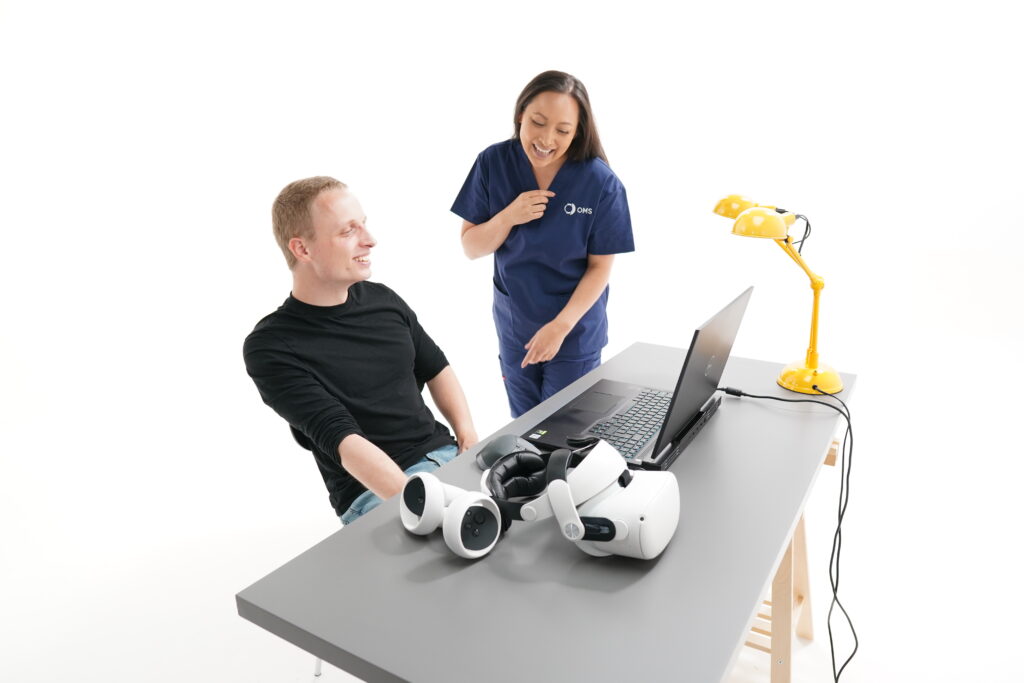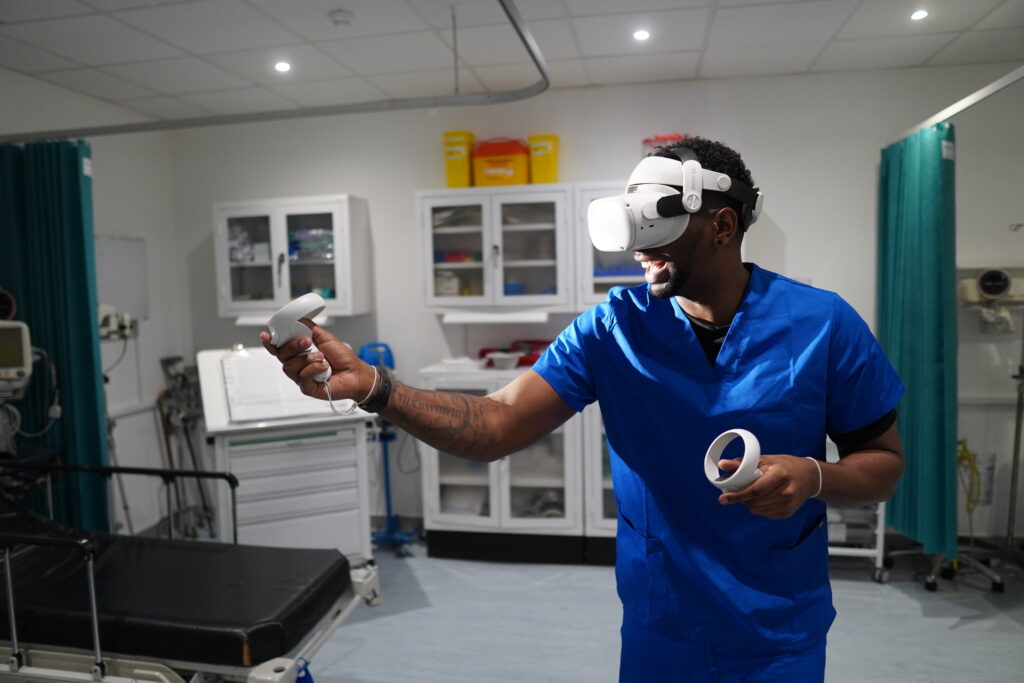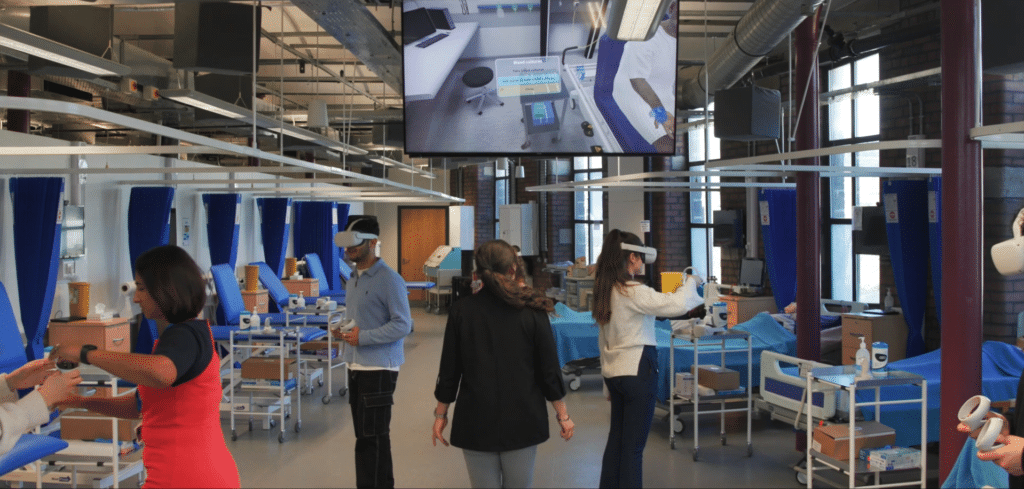The National League for Nursing (NLN) conference this year brought over 1,000 nurse educators, leaders, simulation experts to sunny Orlando, Florida for a week of connection, networking, and learning about the state of nursing education today and how we can continue to improve, enhance, and drive better patient outcomes through healthcare training.
The OMS team headed to NLN with one goal in mind: to listen, learn, and connect. Spending time with nursing faculty and leaders gave us a chance to hear firsthand about the challenges educators are facing. Even more importantly, it helped us spark conversations about how we can best support their work—whether that’s preparing students for clinical practice or helping improve patient care.
During our time at NLN, we attended sessions, heard from experts presenting in their respective fields, and talked with many educators on stand to ensure we have a comprehensive outlook on nursing education in the United States, and we’ve compiled our key findings to share in this blog outlining what we learned and what this means for the future of nursing education and training.
OMS at NLN
NLN gave us a perfect opportunity to hear directly from educators, faculty, and staff about the challenges, needs, and barriers facing the future of healthcare simulation.
We spoke with educators across programs – from ADN to BSN and APRN programs – about what their learners need right now and how advancing technology can support the achievement of learning objectives while maximizing meaningful learning experiences.
While everyone has their own unique set of needs, we heard many common threads throughout the conference.
There continues to be excitement and research around virtual reality (VR) and artificial intelligence (AI) to support clinical placements and experiences, yet there also continue to be questions around implementation and support – from cybersecurity to curriculum integration and buy-in from faculty and students – we heard a lot about the importance of setting up your program for success well before any implementation begins.
Key takeaways from the conference
Communication, communication, communication…
We heard it again and again – from faculty, staff, leadership – and across programs, it seemed to be the general consensus that communication is one of the key identified clinical skills that students need more opportunity to practice and refine ahead of gaining full licensure and beginning independent practice.
The disruptions during COVID appear to be, at least in part, responsible for the identified gaps in communication across the curriculum, however, many faculty reported this as an ongoing area of focus, regardless.
Many faculty have looked to virtual reality to support this continued need. In particular, faculty are seeking scenarios that leverage AI, so that students are able to speak naturally in conversation – with virtual patients, family, and colleagues – to support the development of therapeutic communication skills.
OMS, for example, has a suite of AI-powered scenarios focused specifically on the ability to engage in conversation with virtual patients and their families. This is particularly beneficial for difficult situations, such as breaking bad news or de-escalation.
This use of both VR and AI is providing an avenue for nursing students to gain realistic practice in an autonomous way, practicing communication and patient rapport earlier, or more often, in their programs.

Common challenges to implementation
There was quite a lot of buzz around using technology to support meaningful learning experiences and drive nursing education forward.
However, any new tool requires careful planning for a seamless implementation process, and that was echoed in the conversations we had with the folks in attendance.
Our team repeatedly heard about the importance and emphasis placed on a proper orientation and pre-brief, for students, faculty, and staff.
Gaining buy in from other faculty, getting students engaged, and funding were identified as common areas of concern.
Other programs reported funding as a main barrier to entry, with concerns around infrastructure, support, and demonstrating ROI to leadership.
To that end, solutions must be sustainable and require an adoption plan to ensure appropriate buy in from all levels – before implementation begins.
For those interested in learning more, have a read through our latest eBook on implementation and support – it covers institutional readiness, identifying VR fit and partners, and implementation models already in use by educators around the world with their nursing students.
AI is the talk of the town…but what does it all mean?
Artificial intelligence (AI), Large Language Models (LLMs), and Natural Language Processing (NLP) – often-discussed (about half of the sessions at NLN were about one of these concepts!), but there are still a lot of questions about its use and feasibility.
We recently covered this topic in our webinar in Leveraging AI in Healthcare Simulation which touched on many of the questions we hear at conferences, like NLN, along with actionable insights for integrating VR and AI into a simulation program. To learn more about that, watch the replay here.
While there’s much excitement around the topic, and reasonably so, it comes with questions like ‘What does it mean if a scenario uses AI versus one that doesn’t?’, ‘How do we know our information is safe?’, or ‘What do students get out of using AI?’.
It appears that even with all the current discussions, clearer guidance is still needed on what exactly AI means in practice and in a simulation context, so that educators can effectively implement this technology to maximize its impact on student learning outcomes.
Students need repetition
We’ve heard this before – students need repeated practice. That’s one reason why a simulation program often needs multiple modalities for students to get touchpoints throughout their curriculum to maintain their foundational skills.
Between heavy content loads, limited clinical placements, or a gap in time between didactic and clinicals – students may forget what they learned in year 1 by the time graduation rolls around, underscoring the continued importance for repeated practice and independent access to that practice to ensure clinical readiness.

What this means for the future of nursing simulation
The interest in immersive tech is real, but with any new tool, it requires careful consideration and planning so that everyone is aligned prior to launch and can get the most out of the tool or platform being used.
These tools must be outcome-driven, grounded in evidence, and ideally come with a comprehensive support team to help drive seamless integration into a nursing program.
Affordability, sustainability, and scalability are key areas of focus, alongside necessary content, such as communication scenarios.
Technology like VR and AI can be immensely beneficial to a nursing program, not only saving time, reducing costs, and streamlining efficiencies, but also in providing equitable access to realistic, repeatable, scalable simulation for nursing students.
This means students can get the independent, repeated, deliberate practice they need to successfully navigate the transition to practice becoming competent, confident, and prepared for the responsibilities of everyday clinical practice.
Want to learn more about how OMS supports your nursing program? Get in touch with us to explore the platform and book a demo!
